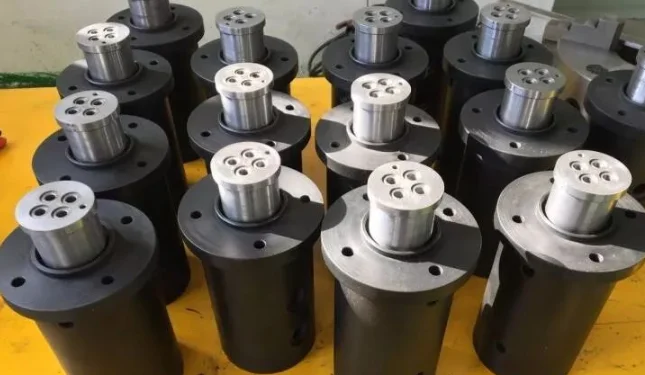This is an article introducing rotary joints. The article mainly introduces the purchase precautions and uses of rotary joints. Next, Daweiruisi, the manufacturer of rotary joints, will introduce the selection guide of rotary joints and the main functions of rotary joints.
Introduction to Rotary Joints
A rotary joint is a kind of closed rotary joint for a 360°rotation conveying medium. It is divided into hydraulic rotary joint, high-pressure rotary joint, multi-channel rotary joint, high-speed rotary joint, high-temperature rotary joint, single-channel rotary joint, special rotary joint for LED special rotary joint. Joints, special rotary joints for excavators, special rotary joints for machine tools, etc.
Rotary Joint Selection Guide
1. One-way flow type: Rotary joints are installed at both ends of the rotary joint drum, and the fluid enters from one end and discharges from the other end, without using an inner pipe.
2. One-way flow type: A rotary joint is installed at one end of the drum, and the fluid is introduced and discharged at this end at the same time. The rotation of the inner pipe of the rotary joint relative to the drum is stationary.
3. Two-way flow type (fixed inner tube) rotary joint: The difference from the previous one is that different types of siphon tubes are installed in the drum to discharge the condensate. This type is mostly used for steam type.
4. Two-way flow type (inner tube rotation): This type of rotary joint is used for the structure in which the inner tube is relatively fixed to the drum and runs synchronously with the drum. At this time, the fluid is introduced by the inner tube and discharged by the outer tube.

5. Two-way flow type (inner tube rotation): a siphon that runs synchronously with the drum is installed inside the drum to discharge the condensate. This type of rotary joint is mostly used for steam.
The main function of the rotary joint
(1) Food: Rotary joint is suitable for grain, food drying equipment, kneader, bleeder, rolling crushing equipment, and rotary drying equipment.
(2) Steel making, metal, and alloy products: continuous casting machines, hot steel plate straightening machines, wire drawing, rolling mills, high-precision rolling equipment, extruders, rolling machines, wire and pipe rolling equipment, and Rotary joints can be used in loading and unloading machinery, as well as in wet grinders for the manufacture of cemented carbide.
(3) Electrical appliances: double water internal cooling generator rotor cooling, wire, and cable processing equipment.
(4) Cigarettes: drying machine, drying machine.
(5) Building materials: processing equipment, testing equipment, printing machine, embossing machine, groove bottom printing machine, and wood processing hot press for plastic wallpaper. Plate-making machine for asbestos products. Processing equipment for cork products.
(6) Machinery manufacturing: rotary joints can be used for hydraulic presses, hydraulic presses, gas-hydraulic related equipment, screw presses for cooling, clamping and gripping devices for punching and forging equipment, diameter reducing equipment, and coiling equipment for flexible hoses, plus turntable mechanism, grinding equipment, machine tools, vacuum equipment, boring machines, combined machine tool lubrication, and cooling devices.
(7) Glass industry: drum feeder.
(8) Geology: Drilling rigs for oil or another mineral drilling.
In short, any cylindrical, drum, truncated, spherical rotating equipment and reciprocating motion or pendulum (rotation) that use steam, water, oil, gas, air, brine, ammonia, and other gases and liquids for heating, drying, and cooling Rotary joints can be used with equipment that can move at any angle, as well as pneumatic and hydraulic related equipment used for clamping, braking and grasping.
The above is all the content about rotary joints brought to you by Daweiruisi, I hope it will be helpful to you. For more information on rotary joints, please click below:
What should I pay attention to during the installation of the rotary joint?










Comments (0)